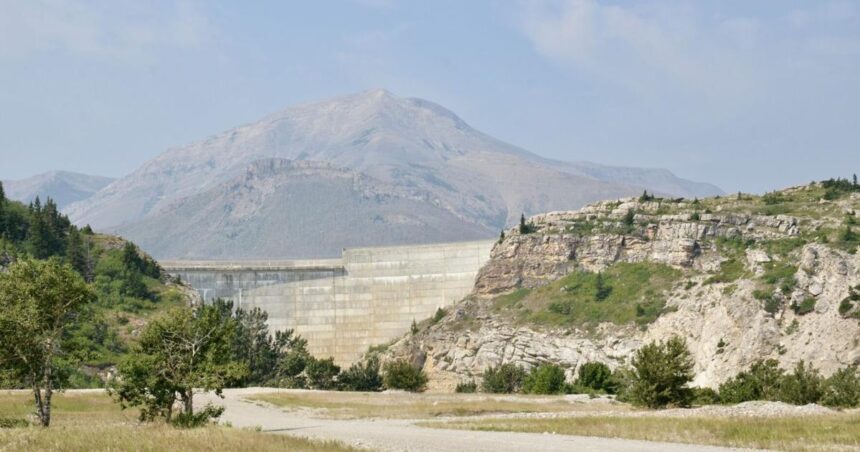Sixty years ago, a wall of water 30 feet high surged toward Highway 89 at 22 mph after Swift Dam burst.
KSEN Radio announcer Bob Norris recalled how the 157-foot-high dam on Birch Creek disintegrated “with a great cracking sound like a giant thunder and lightning bolt,” and “thousands of tons of cascading water roared down into the valley, snuffing out homes and lives in a matter of seconds.” Ten miles below the dam, Ramona Tatsey was gathering her family to leave for safety in Browning when she saw mature trees along the creek start to topple: “They were falling like they were being chopped down,” she recalled. The family barely managed to scramble up a hillside before their home was obliterated in the flood.
What’s widely considered the greatest natural disaster in Montana history killed at least 30 people on the Blackfeet Indian Reservation that June 8, 1964. The Two Medicine Dam also collapsed that day, contributing to several of the deaths.
Farther east, floodwaters deluged Great Falls. On the west side of the Continental Divide, the Flathead River watershed inundated Columbia Falls and Kalispell. Hungry Horse News publisher Mel Ruder earned a Pulitzer Prize for his coverage of the catastrophe. All told, the flood of 1964 touched almost 30,000 square miles, or 20% of Montana. A 2020 dam safety analysis estimated the damage at $500 million.





